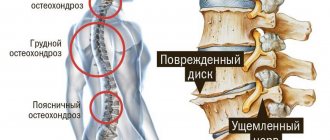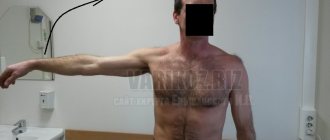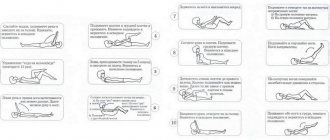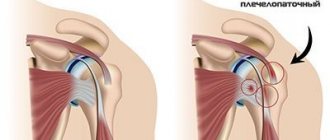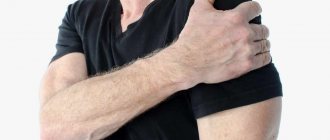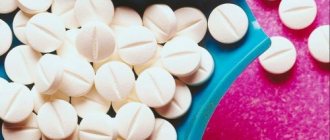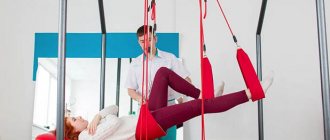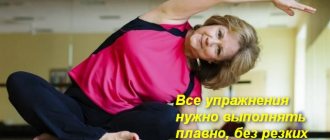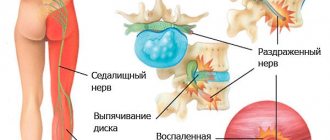Medicine can be traditional and folk, paid and free, Western and Eastern. And there is also a third medicine, the author of which was Petr Alexandrovich Popov.
A traumatologist in his main specialty, he mastered many related areas of medical science and generated from them a system that allows him to cope with seemingly hopeless cases.
At the same time, the basis of treatment is not medications, but physical exercises . Injuries to the back and joints, osteochondrosis of the spine, arthrosis of the knee joints, varicose veins, humeroscapular periatritis - Popov’s set of exercises makes it possible to restore lost health and forget about the painful manifestations of the disease.
A few facts about the famous healer
At the beginning of his professional career, Petr Popov practiced for several years at a clinic and a rural hospital. During this time, he collected information about traditional and non-traditional treatment methods that gave results in the most difficult cases. But the doctor saw his calling not only in personally treating people, but also in sharing his knowledge with them. This is how many books, videos and TV programs were born, in which Pyotr Aleksandrovich talks about what health is made of.
Petr Aleksandrovich Popov is a traumatologist.
Doctor Popov - answers to questions, biography (video)
Popov’s exercises: what’s the point
A set of exercises by Dr. Popov Petr Aleksandrovich - specially designed movements that help in the treatment of the disease and help restore the functioning of the affected joint, as well as eliminate contractures. The essence of the technique is a targeted effect on both soft and hard tissues of the shoulder.
The main difference between Popov’s gymnastics and other exercises is repetition, due to which a large amplitude is achieved. In addition, repeating exercises helps warm up the muscles.
Dr. Popov’s physical therapy promotes:
- normalization of blood supply to the affected area;
- restoration of the previous functionality of the shoulder joint;
- restoration of range of motion;
- strengthening the ligamentous and muscular apparatus;
- relaxation of muscles and tendons;
- restoration of muscle tone.
Exercises for mild pain
Gymnastics for unexpressed pain syndrome is recommended to be performed in a supine position. The surface on which you plan to practice must be hard.
- Lie on your back, raise your arms. First, bend and straighten your fingers. Do this exercise eight times. Next, move on to squeezing and unclenching your hands into fists. There must be at least eight repetitions.
- Lying in the starting position, raise your arms, bend them slightly at the elbows and make ten circular movements with your hands, first in one direction, then in the other.
- Bend your elbows, place your hand on your shoulder, and hold the position for a few seconds. Do the same with the second hand. There must be at least ten approaches.
- Place your arms along your body, bend them at the elbows and slowly spread them to the sides. Try to pull your elbows as high as possible. The brushes should be in contact with the floor at this moment. Repeat six times.
- Spread your upper limbs to the sides, palms up. Lie in this position for five to ten seconds.
Rules of physical therapy
You can practice Popov gymnastics only after a preliminary consultation with a doctor. Performing exercises without a prescription and without the knowledge of a specialist can harm you. Moreover, when starting to perform exercise therapy, you must be guided by a number of rules.
- do not practice the technique during exacerbation of inflammatory-degenerative pathology;
- You can perform exercises with minor painful sensations. Pain in the shoulder joint can be relieved with painkillers;
- It is strictly forbidden to do gymnastics in case of pronounced pain;
- do not load the joint immediately. Increase the intensity gradually. Do not resort to strength exercises without thoroughly warming up and preparing the shoulder joint for this;
- intense pain can be minimized by doing a massage;
- in order to enhance the effectiveness of physical therapy, it is recommended to supplement Popov’s gymnastics with exercises using a ball, rubber band, gymnastic stick, and dumbbells;
- exercise should bring pleasant sensations, but not pain, discomfort or fatigue. If you experience pain during exercise, you may be doing something wrong;
- After each exercise, be sure to relax your shoulder muscles;
- watch your breathing. It should be in time with the movements;
- perform each exercise at least five times;
- If you have already started the complex, do physical exercises every day. If this principle is violated, there may be a significant decrease in the effectiveness of the activities performed.
The most likely causes of glenohumeral periarthritis
The clinical picture of the disease allows us to identify two most likely causes
, leading to the formation and development of degenerative processes in the shoulder joint:
- Neurodystrophic changes
, progressing in diseases of the musculoskeletal system.
- Shoulder injuries
received in the course of everyday life or professional activities.
Despite the existence of probable causes, there are cases when it is impossible to determine the prerequisites for the pathology.
In addition to probable causes, there are a number of risk factors
, increasing the likelihood of periarthritis of the glenohumeral region. These include:
- age characteristics;
- local or general hypothermia of the body;
- motor dysfunction;
- abnormal skeletal development;
- surgical intervention leading to impaired blood supply to the tissues of the shoulder.
The most important
The Popov complex is effective; it will help prevent and cure (complex therapy) glenohumeral periarthritis, and normalize the functionality of the affected joint. However, before conducting classes, you need to consult with your doctor regarding the presence of contraindications. If a specialist allows the patient to perform physical therapy, it is recommended that the first classes be conducted under the supervision of an experienced instructor. He will help you choose the most suitable exercises for the patient and create an individual complex. If pain or fatigue occurs, you should stop exercising. To speed up recovery, you need to perform Popov’s gymnastics daily.
Contraindications to the use of physical education Popova
This technique is effective, efficient and will certainly help in treating the disease. However, along with its advantages and indications, it has a number of contraindications.
It is not recommended to practice Popov physical therapy if you have:
- fever;
- CVS pathologies;
- conditions associated with an increased risk of any type of bleeding;
- arterial hypertension.
Performing Popov's exercises in the above conditions can cause a significant deterioration of the condition.
Knees
The knees are the largest and most complex joints in the human body. And one of the most susceptible to injuries and pathologies. They bear the load almost all the time a person is awake, even when sitting and standing. Therefore, it is not surprising that with age, diseases of the knee joints make themselves felt among the first. However, if you take care of the health of your knees from a young age, there is a chance you will never know how much they hurt.
The section on knee health will help you find out:
- What diseases are a sign of a crunch when bending the legs?
- How does damage to the meniscus of the knee joint manifest?
- What does pain indicate when bending and straightening the knee?
- How to treat Baker's cyst.
- About the most effective first aid remedies for severe knee pain.
Diagnosis of glenohumeral periarthritis
You should seek medical help if symptoms of glenohumeral periarthritis appear, which include pain of varying strength and difficulty in motor function.
Diagnosis of glenohumeral periarthritis is carried out by a general practitioner - therapist
. Based on the results of studying the patient’s medical history and identifying key symptoms, the therapist can give a referral to such specialized specialists (surgeon, neurologist, orthopedist).
To clarify the diagnosis and determine the causes of the disease, diagnostic methods are used such as:
- radiography;
- ultrasound examination (ultrasound);
- MRI diagnostics;
- laboratory type research.
What is glenohumeral periarthritis?
Humeroscapular periarthritis
is a disease localized in close proximity to the shoulder joint. The progression of the pathology leads to changes of a degenerative-dystrophic nature, causing reactive inflammation.
Women over 55 years of age are most at risk of developing pathological processes in the shoulder joint. However, despite this, the disease can also be diagnosed in men.
In practice, right-sided periarthritis is more common, which is explained by increased loads on the limb, but this does not at all exclude the development of other forms of periarthritis of the shoulder.
General rules and requirements
You need to practice in a warm, pre-ventilated room. For training, you should choose clothes made from natural materials that absorb moisture well and are breathable. To achieve the maximum therapeutic effect in a relatively short period of time, it is necessary to follow the following recommendations of exercise therapy doctors and rehabilitation specialists:
- Sudden movements, high-amplitude bends, heavy lifting, and intense shoulder rotations are unacceptable;
- classes should be held daily;
- all movements are performed smoothly, slowly, carefully, constantly monitoring the sensations that arise.
The basic rule of therapeutic exercises is a gradual increase in loads. Many technically complex exercises cannot be completed the first time. They can be dealt with after 1-2 months of regular training, when the ligaments and tendons become strong enough.
Forms of glenohumeral periarthritis
Today it is customary to distinguish three main forms of pathology:
- simple;
- acute;
- chronic.
In a situation where the disease occurs as a result of the consequences of an injury, several days or even a week may pass before the symptoms of glenohumeral periarthritis appear, which is the reason for the formation of prerequisites for the formation of the disease, for which only a small part of patients seek diagnosis.
Another form of glenohumeral periarthritis, which is quite rare, is considered to be algodystrophic “shoulder-hand” syndrome, which is characterized by severe pain, the presence of cold swelling, atrophy of joint tissue and loss of mobility.
The course of the disease, accompanied by the “shoulder-hand” syndrome, is characterized by protractedness and complexity of treatment.
Symptoms
The first signs characteristic of the simple form do not appear immediately. Here is what is typical for this stage:
- Minor pain in the shoulder that occurs with movement and stress and goes away at rest. Unfortunately, patients rarely consider this symptom to be a sufficient reason to see a doctor.
- More pronounced pain syndrome with rotational movements of the arm.
- Restriction of mobility that occurs if action is not taken when the first two symptoms appear. The patient is unable to place the affected arm behind his back, stretch it forward or upward.
- Temperature is within normal limits.
If periarthritis is not treated at this stage, then there are two possible paths for its further course. It may go away on its own in about a month, or it may develop into a more severe acute form (especially if the traumatic effect on the joint continues).
The acute form is characterized by the following symptoms:
- Sharp pain in the shoulder and arm, radiating to the neck and shoulder blade.
- Inability to make rotational movements, move the arm to the side and back due to severe pain.
- Worsening pain at night.
- A noticeable deterioration in general health and decreased performance.
- Insomnia.
- Low-grade fever.
- Swelling on the front of the shoulder.
- The patient finds relief in a characteristic position, pressing his bent arm to his chest.
In the absence or low effectiveness of treatment, the acute form becomes chronic after a few weeks. It is characterized by:
- Gradual weakening of acute pain syndrome, which becomes moderate. This happens both at rest and with any movement - only some discomfort remains. Shooting can occur periodically only with sudden (especially rotational) movements.
- At night, lying down in the shoulder may cause pain.
- In most cases, chronic periarthritis can be cured over the years. Frozen shoulder syndrome occurs after a few years in only about 30% of cases. This is ankylosing periarthritis, in which sharp pain returns under any load, hardening of the periarticular tissues develops, and hand mobility is limited.
- The final stage of chronic glenohumeral periarthritis is the “locked shoulder” syndrome. At this stage, the limb is virtually immobilized.
